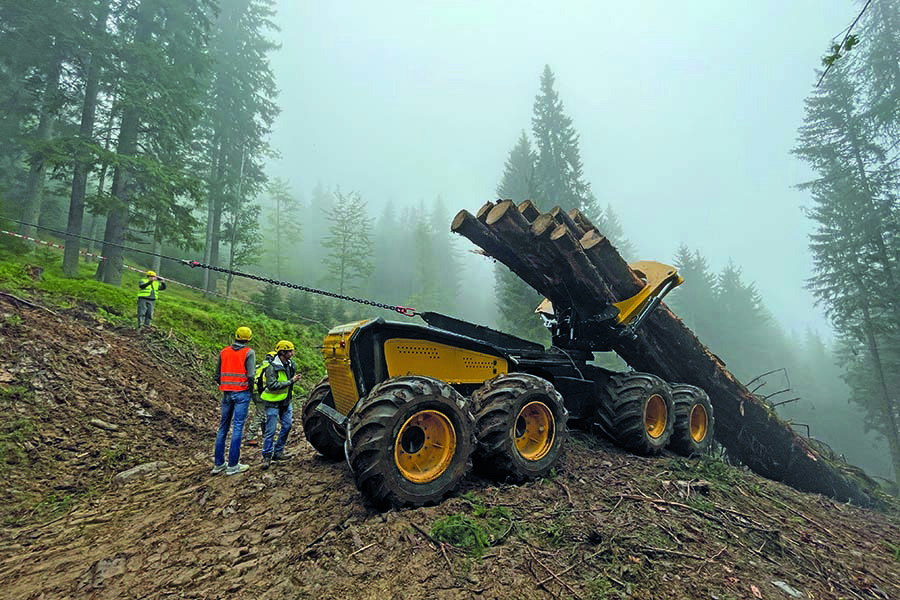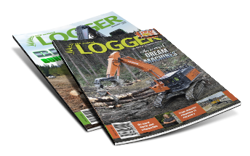Able to drive itself between the felling site and skid, the T-Skidder is an autonomous steep slope machine designed to overcome current manned steep slope skidding challenges. Professors Rien Visser and Karl Stampfer investigate this example of the move from mechanisation to autonomous systems.
The forestry machine manufacturing company Konrad, located in Southern Austria, has been very successful in manufacturing cable yarders and carriages, as well as harvesting heads.
For example, Konrad's Woody 60 processing head has sold over 4,000 units. Apart from being robust but still compact, one of its main selling features was the innovative design that allows part of the head with the feed-rollers to ‘retract’, leaving just the grapple for sorting and or loading.
While initially developed for the European market with its maximum opening of 60cm, it has found favour in South America as well. There is only one operating in New Zealand, and for our larger clearfell operations it might be ‘light’ for our larger pine trees, especially trying to delimb the larger branches on a mature radiata pine (they do now make a 70cm version).
Over 300 Mounty yarders have been sold that integrated the processor and cabin onto the yarder carrier, which is simply a highway capable truck. This makes it very compact and able to work in tight spaces, as well as being highly mobile for moving between sites. With the carriage movement automated, the operator only needs to release the extracted stems – typically using radio-controlled chokers – and is able to focus on processing. While some yarder manufacturers in Europe have started to develop grapple carriages, most of these yarders are still very much designed with slack-pulling carriages in mind.
Something new
But neither the Woody harvester head nor the Mounty yarder are new. What might be of interest to the New Zealand market is that Konrad, together with EcoForst, has recently released a semi-autonomous skidder. EcoForst, also located in southern Austria, manufactures the T-Winch that is already well known in New Zealand – hence the name T-Skidder as it is specifically designed to be supported by a T-Winch winch-assist. The movement of the skidder itself is either remote or GPS-controlled, so no need for an operator – and hence also no need for a cabin.
For the first turn, the skidder is guided remotely along the extraction trail. Once a skid trail has been identified the skidder can move itself between the felling machine and the skid. When the T-Skidder is back in the cutover, the harvester operator guides the skidder towards it, and this track is committed to the skidder’s memory.
While not needing an operator is one obvious advantage, as is the significant cost saving of not needing a cabin, there are other design opportunities. For example, designing it with a clam bunk allows the load to be supported over the middle of the machines, sharing the downward pressure from the load between all wheels. This provides for excellent traction capabilities.
Being a clam bunk does mean it...





